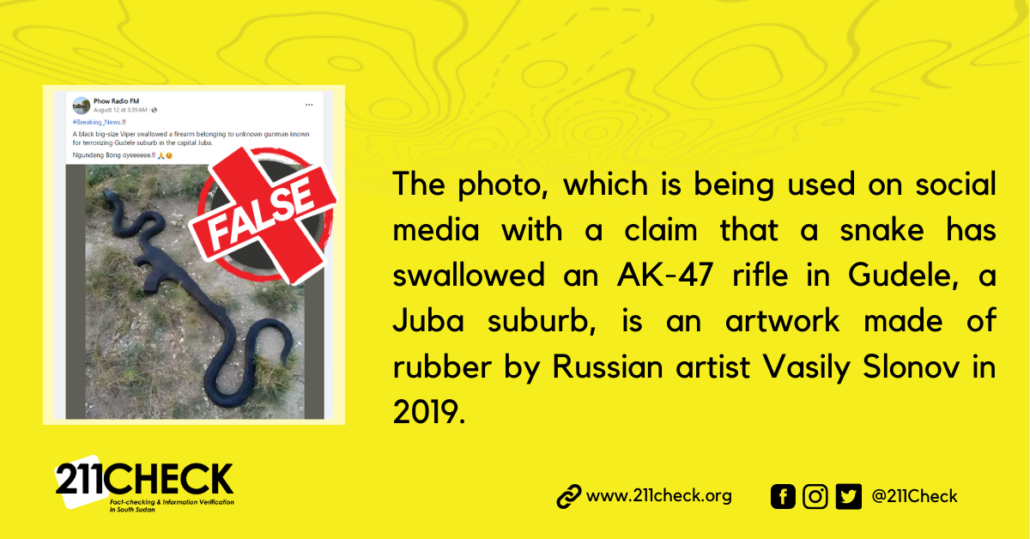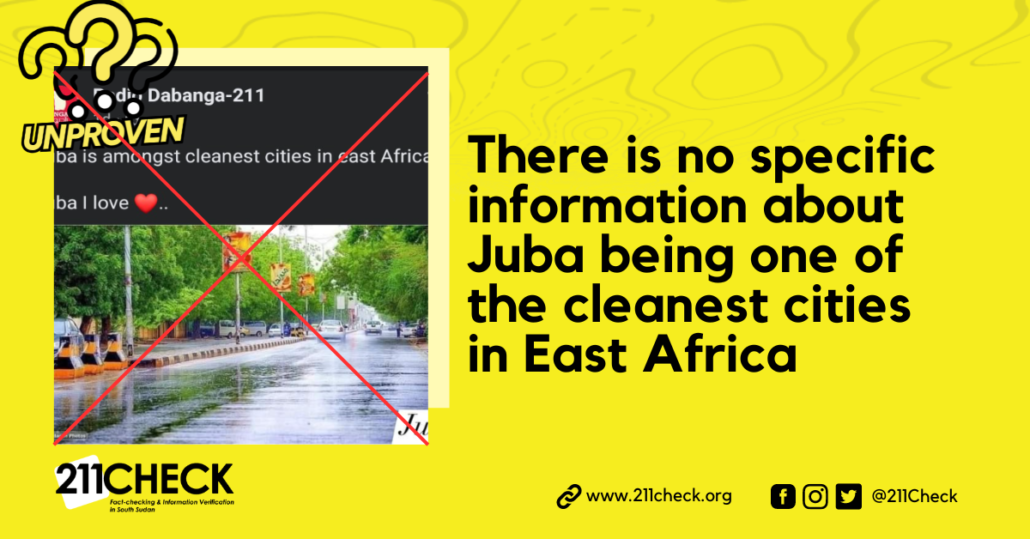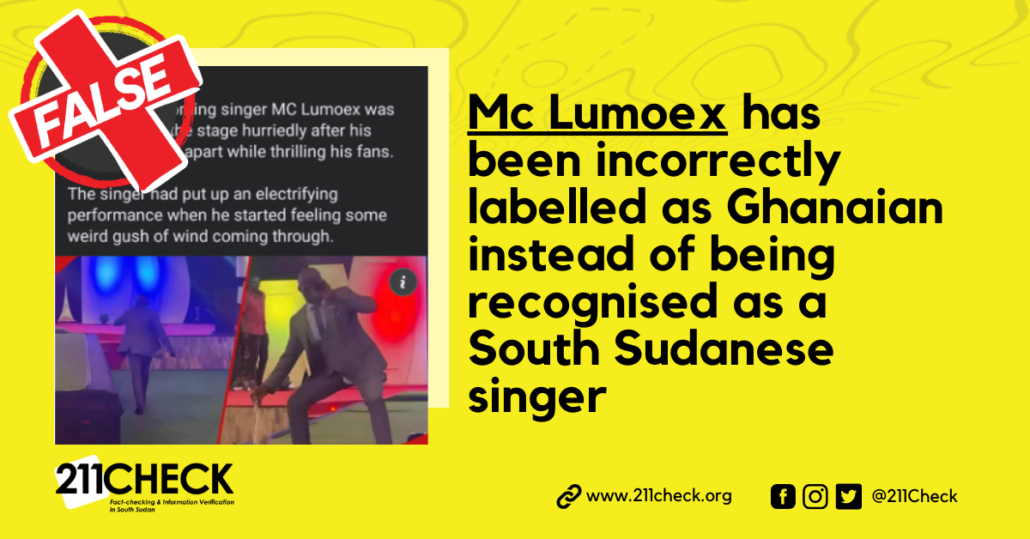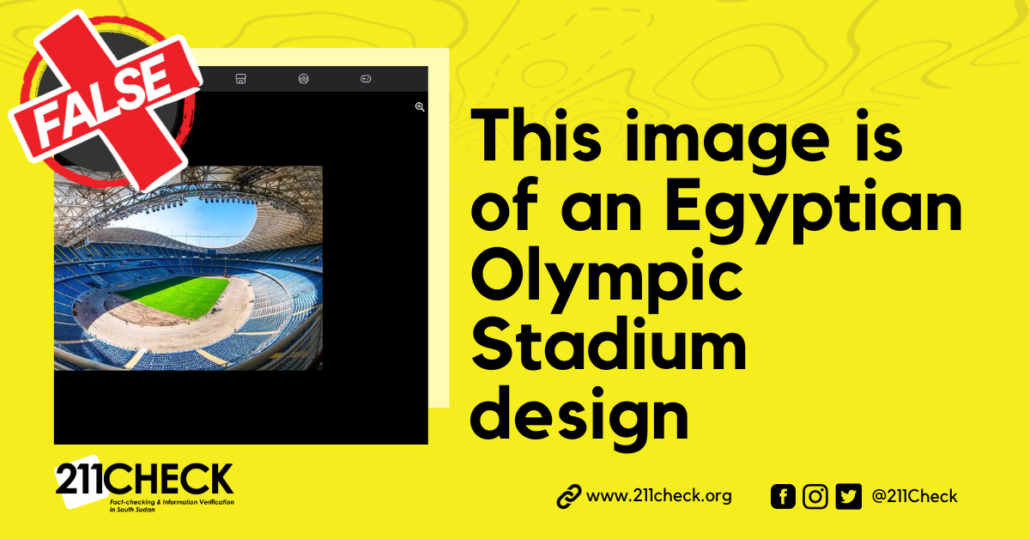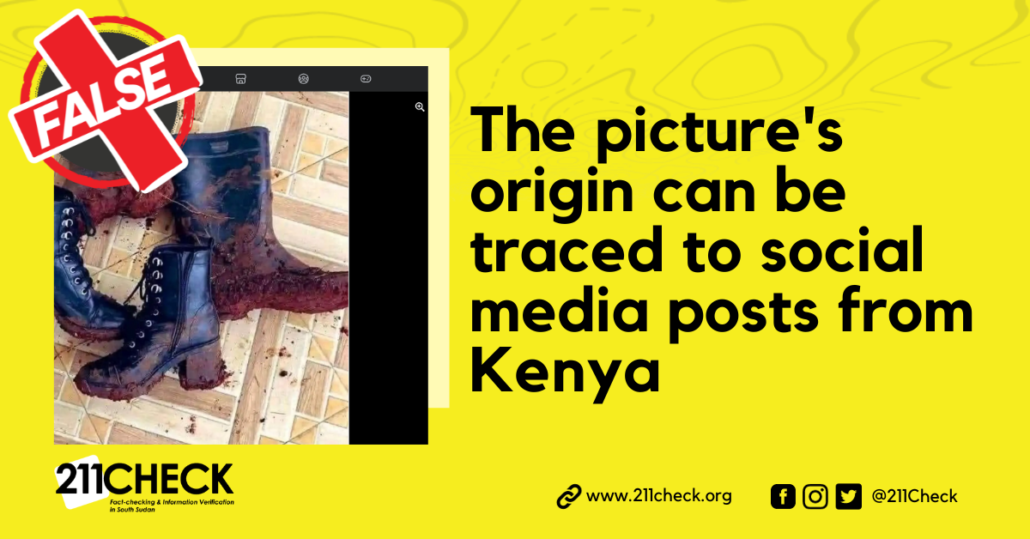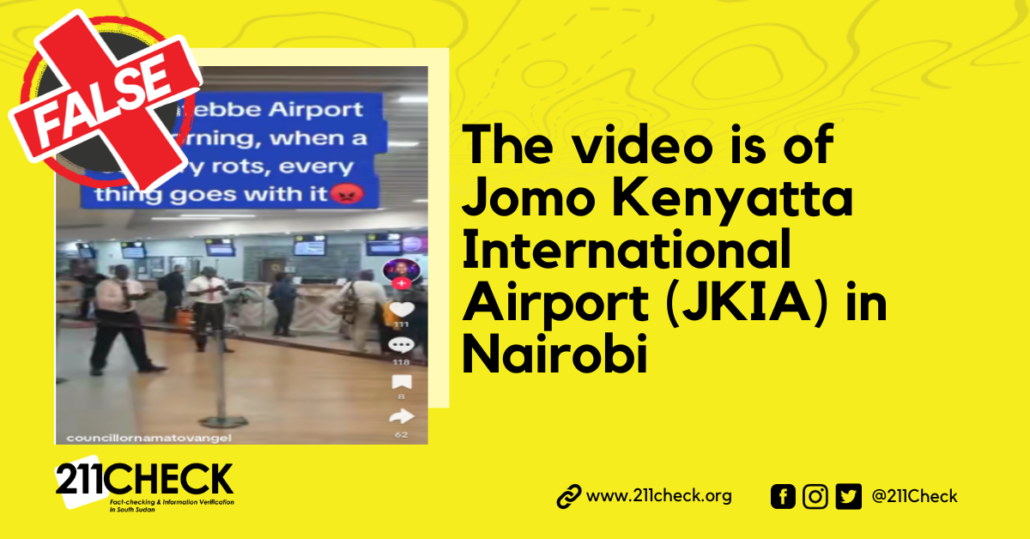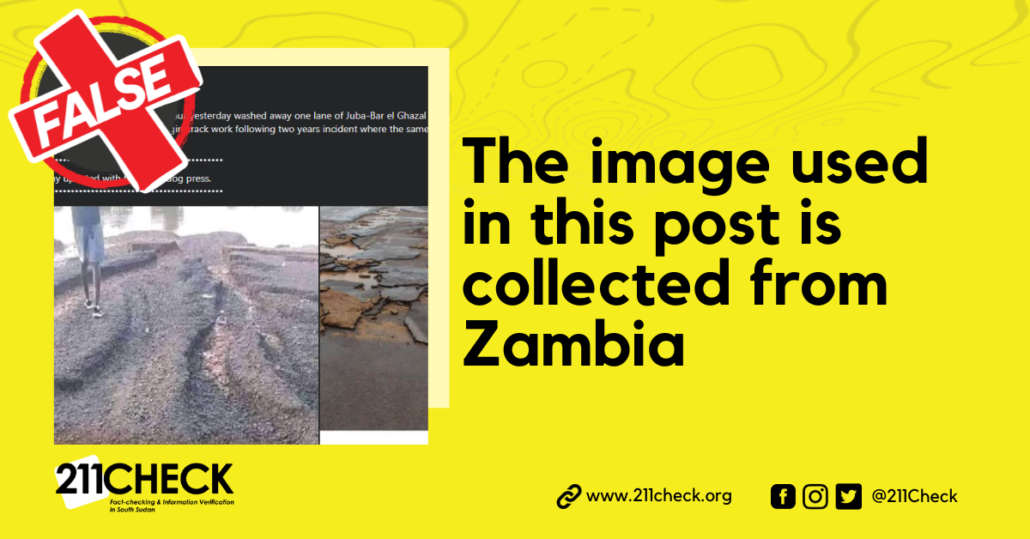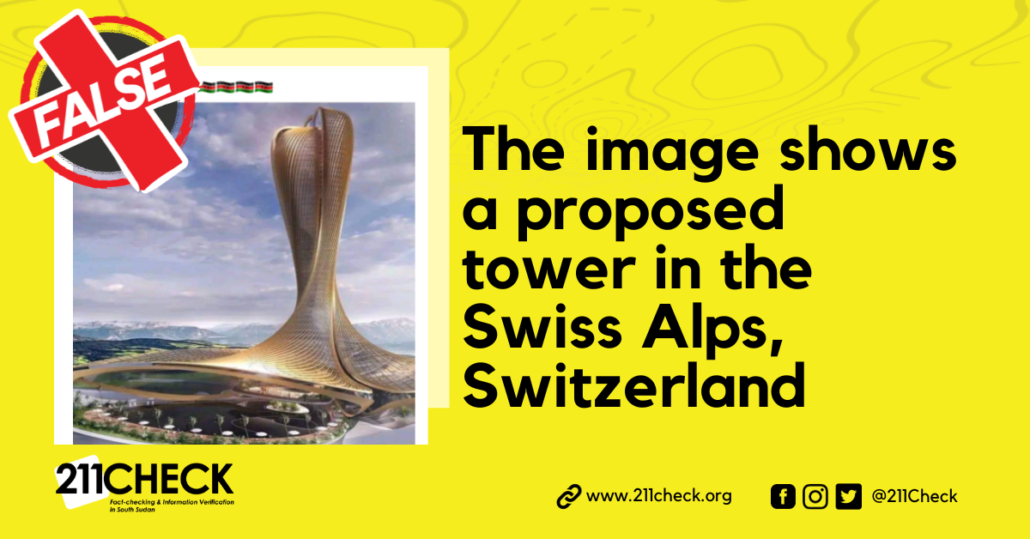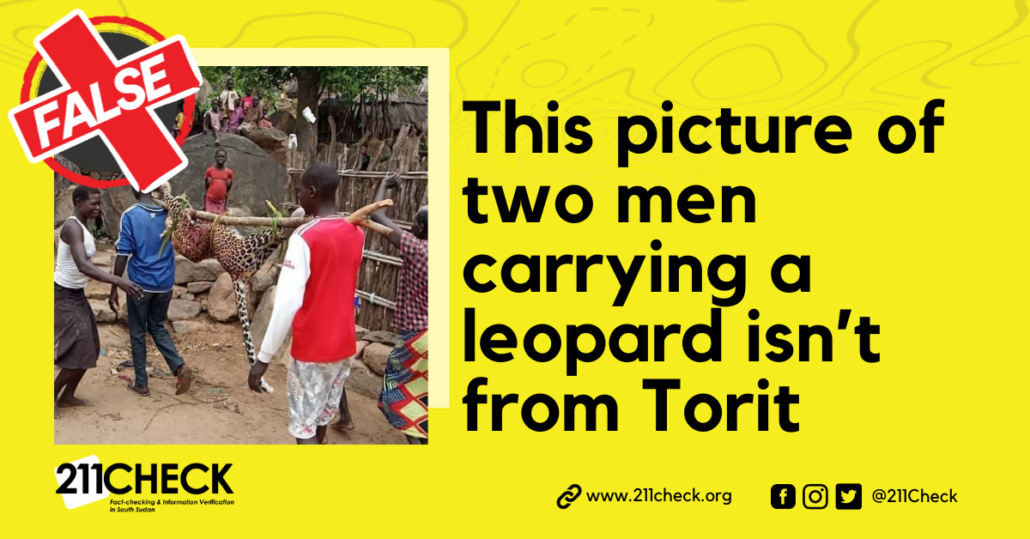Fact-check: Did Donald Trump say everyone in South Sudan is a thief, including civilians?
Global figures like Donald Trump are often subject to fabricated or misattributed quotes online. This is likely one of those cases, with no factual backing.
Writer: Makur Majeng
A recent Facebook post by South Sudanese musician John Frog claims that U.S. President Donald Trump once said, “Everyone is a thief in South Sudan, including civilians.” is false.
The post, which includes the hashtag #GG and a laughing emoji, has sparked curiosity and mixed reactions online. John Frog’s post gained rapid engagement, garnering 160 likes, 60 comments, and one share within five minutes.
“President Donald Trump said everyone is a thief in South Sudan including civilians, what does he mean ?#GG,” reads John Frog’s post.
The screenshot of John Frog’s Facebook post.
Claim Verification:
A Google keyword search using the “Donald Trump everyone is a thief in South Sudan statement” shows no related information.
211 Check conducted a comprehensive review of Donald Trump’s speeches, interviews, and social media accounts like Facebook, and X(formerly Twitter) and revealed no record of him making such a statement about South Sudan. Searches across credible news organizations like CNN and BBC and public records yielded no results.
If Trump had made such a controversial remark, it would have been widely covered by both South Sudanese and international media. However, no credible outlet has reported this claim.
The playful tone of the post, paired with the hashtag #GG and the laughing emoji, suggests it may be satirical or humorous rather than factual. Such exaggerations are common on social media to spark engagement or provoke discussion.
Global figures like Donald Trump are often subject to fabricated or misattributed quotes online. This is likely one of those cases, with no factual backing.
Conclusion:
211 Check has verified that the claim about Donald Trump stating that “Everyone in South Sudan is a thief, including civilians” is false. There is no evidence to support this statement, and it is likely a humorous or satirical comment rather than a factual assertion.
To ensure accuracy and transparency, we at 211 Check welcome corrections from our readers. If you spot an error in this article, please request a correction using this form. Our team will review your request and make the necessary corrections immediately, if any.
It’s vital to fight misinformation and disinformation in the media by avoiding fake news. Don’t share content you’re uncertain about. False information can harm and mislead people, risking their lives—Fact-check before sharing. For more details, visit https://211check.org/, or message us on WhatsApp at +211 921 350 435. #FactsMatter.

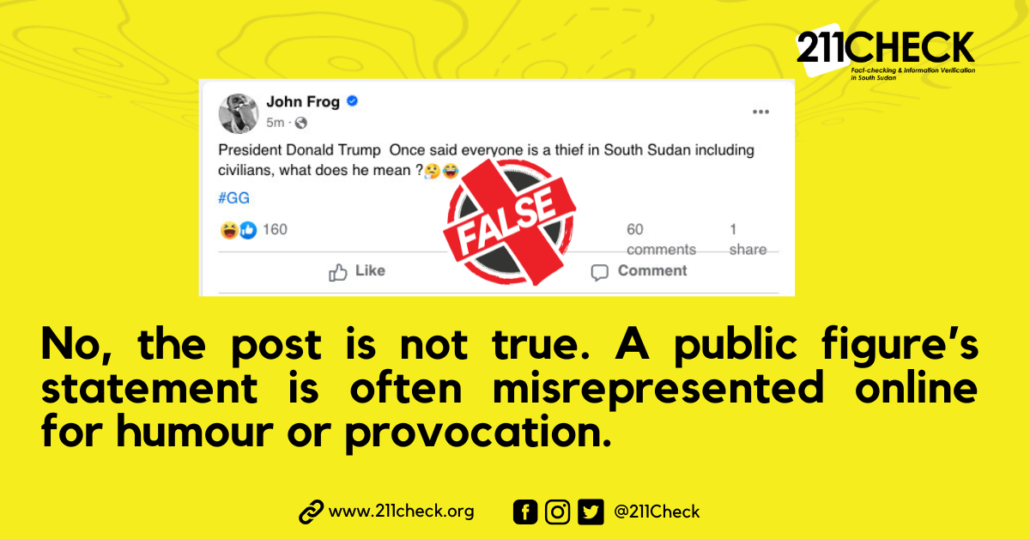 211 Check Graphic Image
211 Check Graphic Image